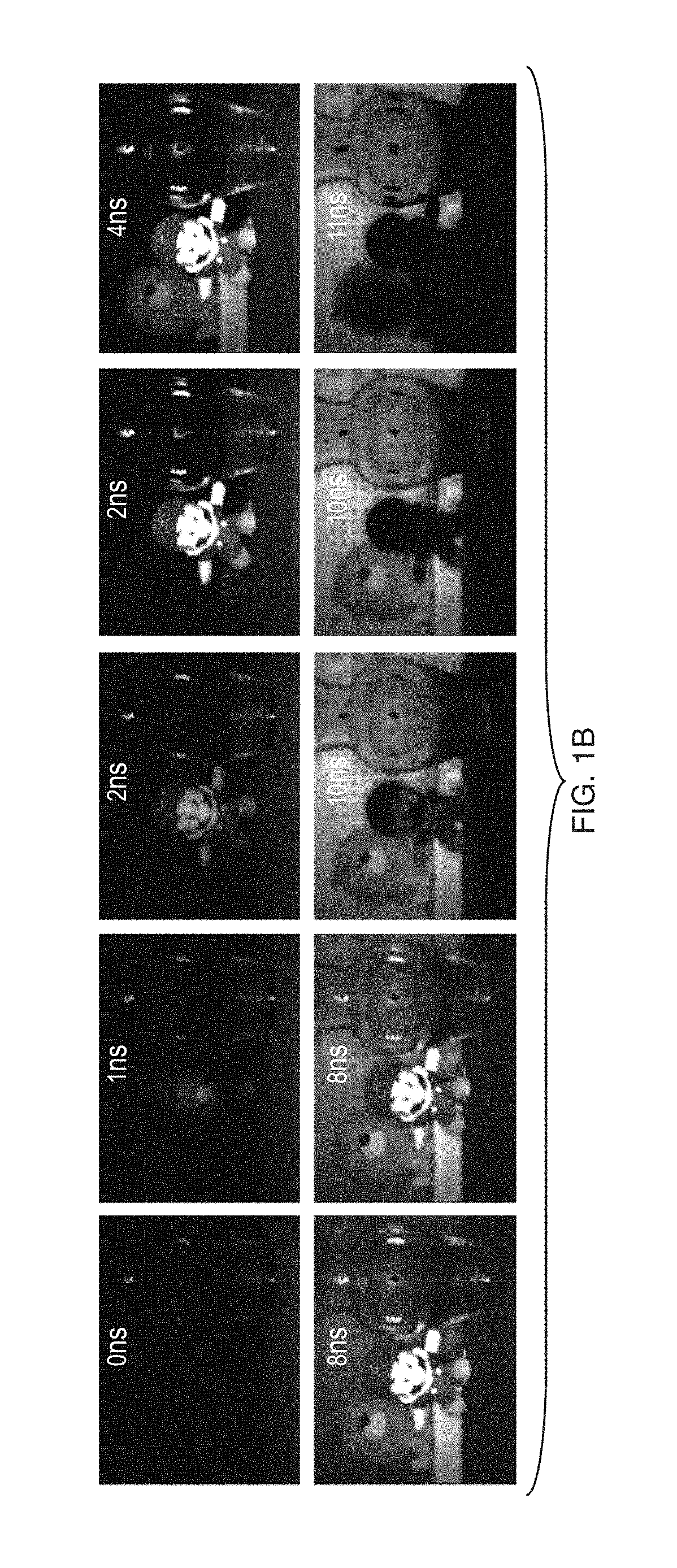Methods and apparatus for coded time-of-flight camera
a time-of-flight camera and coded technology, applied in the field of time-of-flight cameras, can solve the problems of multipath interference, mixing pixel problems, and conventional tof cameras that do not accurately measure scene depth in the case of mixed pixels, and achieve the effect of accurately measuring scene depth
- Summary
- Abstract
- Description
- Claims
- Application Information
AI Technical Summary
Benefits of technology
Problems solved by technology
Method used
Image
Examples
Embodiment Construction
[0067]Conventional time-of-flight (“ToF”) systems achieve depth ranging by amplitude modulation of a continuous wave. These conventional ToF systems assume a single optical path length (range or depth) value per pixel the scene, although the scene may actually consist of multiple depths, e.g., a transparency in front of a wall. If there are multiple depths in a scene, then there are multiple path lengths (from the light source, to the scene, and back to the ToF camera), and a single pixel may receive light reflected from multiple depths in the scene. This scenario (which occurs when multiple light-paths hit the ToF sensor at the same pixel) is commonly known as a “mixed pixel” or “multipath interference”. A conventional ToF camera cannot accurately determine the depth of a mixed pixel; instead, a conventional ToF camera measures a range that is a non-linear mixture of the incoming light paths
[0068]In illustrative implementations, this invention solves or mitigates the mixed pixel pr...
PUM
 Login to View More
Login to View More Abstract
Description
Claims
Application Information
 Login to View More
Login to View More - R&D
- Intellectual Property
- Life Sciences
- Materials
- Tech Scout
- Unparalleled Data Quality
- Higher Quality Content
- 60% Fewer Hallucinations
Browse by: Latest US Patents, China's latest patents, Technical Efficacy Thesaurus, Application Domain, Technology Topic, Popular Technical Reports.
© 2025 PatSnap. All rights reserved.Legal|Privacy policy|Modern Slavery Act Transparency Statement|Sitemap|About US| Contact US: help@patsnap.com



